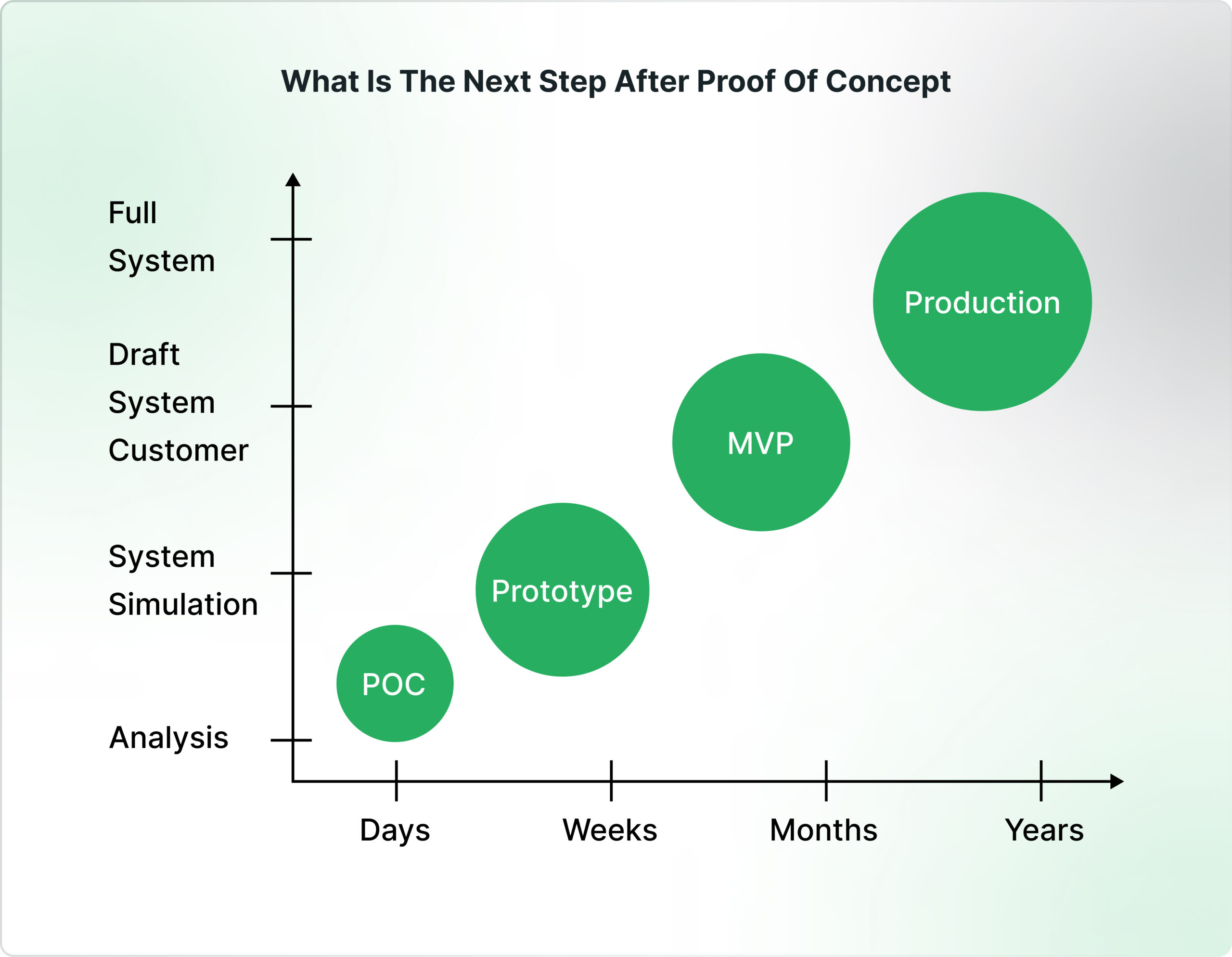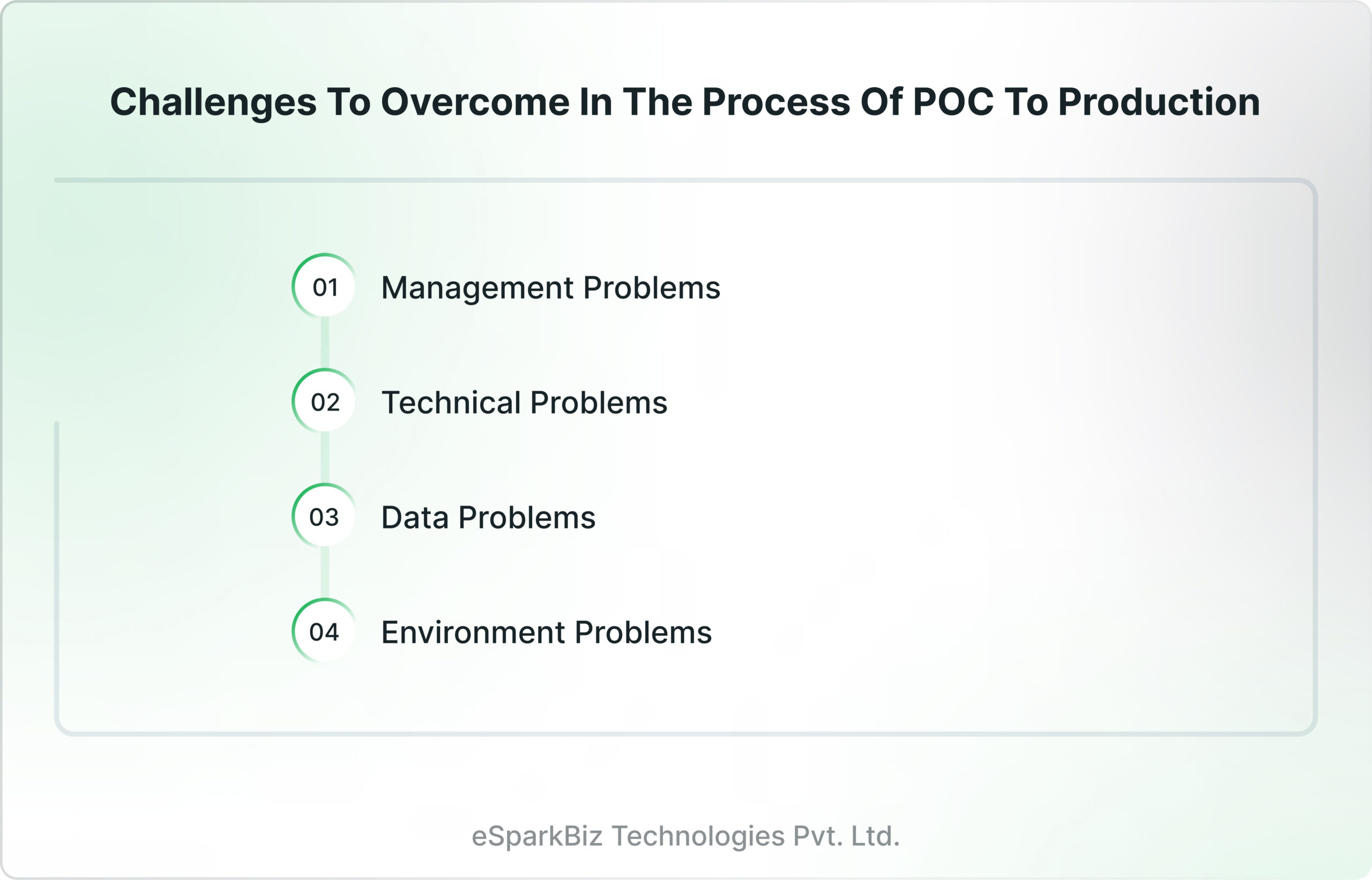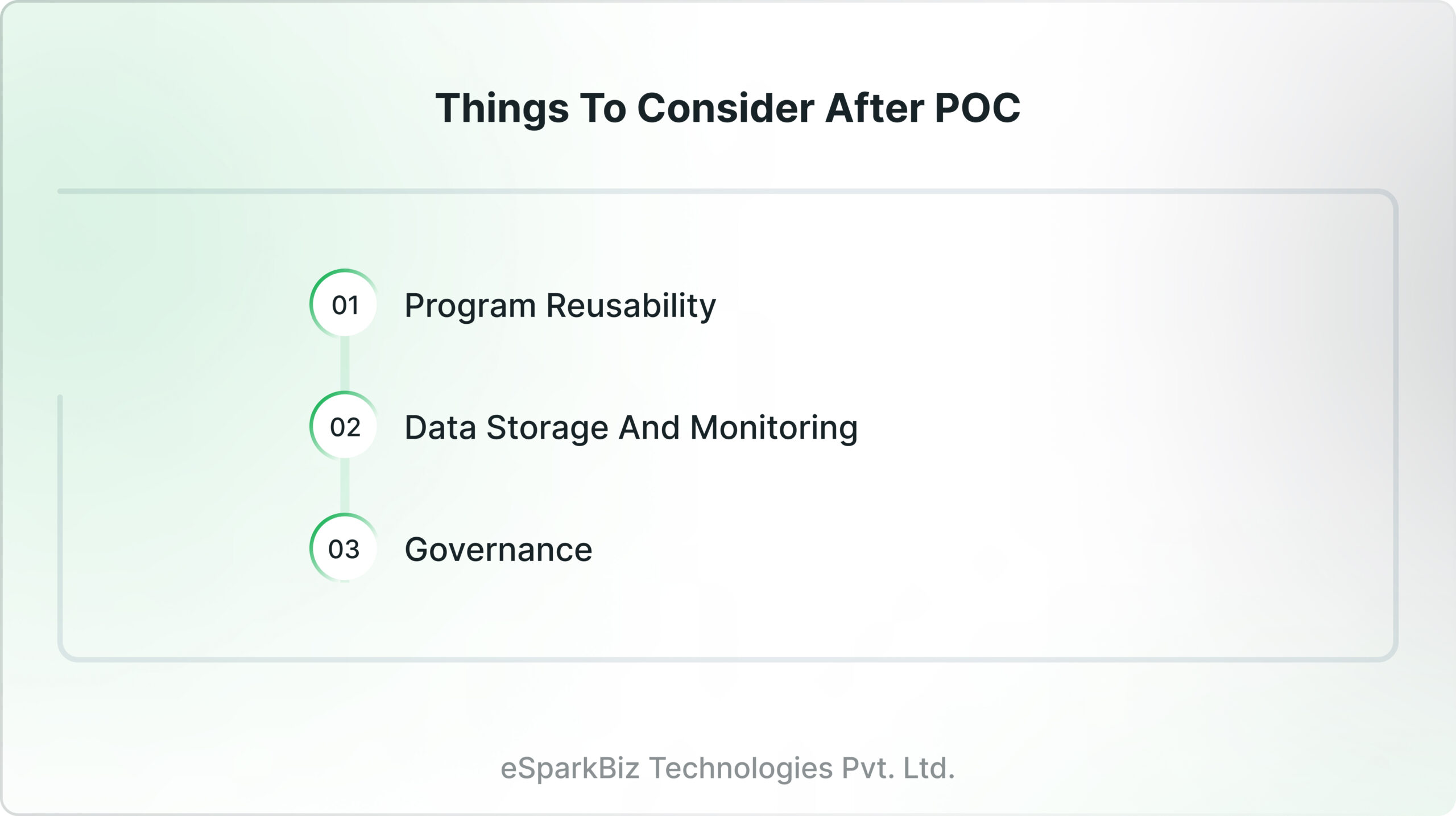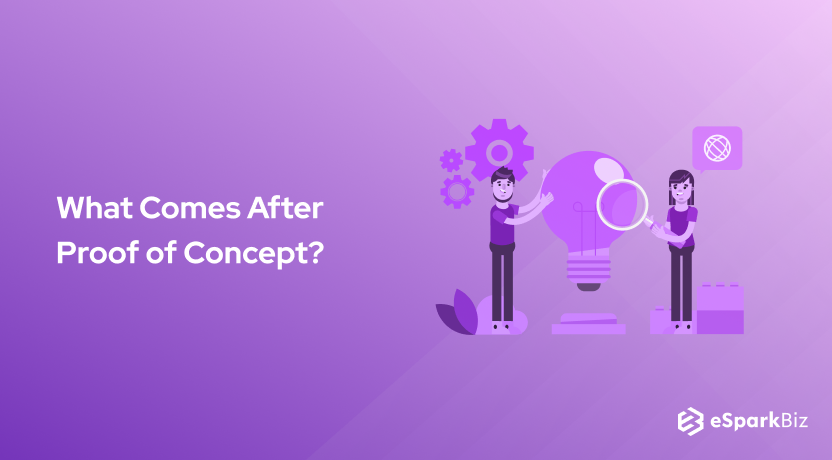In the digital world of innovation, the proof of concept (POC) is the crucial step. The journey doesn’t end there. The PoC demonstrates feasibility and potential, and the focus shifts toward the next pivotal phase: transitioning from concept to reality.
From inspecting the prototype based on evaluated results to creating a minimum viable product (MVP) and entering the production stage, let’s dive into the exciting phase that awaits after proving your concept’s potential.
In this blog, you can explore the important steps after a successful proof of concept and delve into the challenges.
So, keep reading the blog till the end and learn about the after proof of concept process.
What is the Next Step after Proof Of Concept

The next step after a successful proof of concept (POC) is typically the development of a detailed project plan and roadmap. This phase involves translating the validated concept into a comprehensive strategy that outlines the necessary steps, resources, and timelines for executing the project.
The project plan includes identifying specific goals and objectives, allocating resources, defining project milestones, and establishing a clear timeline for implementation. This crucial planning stage ensures that all stakeholders have a shared understanding of the project’s scope, objectives, and deliverables.
1) Inspecting the prototype based on the evaluated results
After the proof of concept is successfully validated, the next step is inspecting the prototype. After inspecting the prototype, teams can identify potential risks. This is one of the most crucial steps.
2) Creating a Minimum Viable Product (MVP)
The next step is to build a Minimum Viable Product. The MVP is a scaled-down version of the final product or solution that includes only the essential features required to provide value to the users or customers. It serves as a tangible representation of the concept, allowing for early testing and gathering additional feedback from users. Focusing on the core functionality, an MVP enables rapid development and minimizes unnecessary time waste.
Also Read : Best Minimum Viable Product Example For Startup
3) Entering into the Production Stage
The production stage aims to ensure that the product is robust, reliable, and ready for widespread use or distribution. It involves coordination between different teams, including development, quality assurance, operations, and marketing, to ensure a seamless transition from development to launch.
Common Challenges to Overcome in the Process of POC to Production – You must know
Things don’t always go the way you think.
Here, let us look at the common challenges of after proof of concept process and how to overcome them.

Management Problems
In the transition from proof of concept (POC) to production, management problems can arise. These may include issues related to resource allocation, project prioritization, and stakeholder alignment. Effective project management is crucial to ensure proper coordination, communication, and decision-making throughout the process.
Clear roles and responsibilities, regular status updates, and proactive issue resolution can help overcome management challenges and keep the project on track.
Technical Problems
Technical challenges are a common problem. These include scalability issues, integration complexities, performance optimization, and ensuring compatibility with existing systems. Addressing these challenges requires a comprehensive understanding of the technical requirements, effective problem-solving, and collaboration among technical teams.
Thorough testing, code reviews, and architectural considerations can mitigate technical risks and ensure a smooth transition.
Data Problems
Ensuring data integrity, accuracy, and availability is essential for a successful production environment. It requires proper data cleansing, validation, and transformation processes.
Establishing data governance frameworks, implementing data security measures, and leveraging appropriate data management technologies can help overcome data-related challenges.
Environment Problems
Environmental challenges refer to issues related to the production environment, including infrastructure limitations, network connectivity problems, or hardware and software compatibility issues. These challenges can impact the performance, stability, and reliability of the product.
Thorough environmental planning, infrastructure provisioning, and compatibility testing are essential to addressing these issues. Close collaboration between development and operations teams, leveraging automated deployment and monitoring tools, and conducting comprehensive environment testing can help overcome environment-related challenges.
Things to consider after POC

After successfully completing a proof of concept (POC), there are several important factors to consider as you move forward:
Program Reusability
After completing a proof of concept (POC), it is crucial to consider the reusability of the developed program or solution. Assessing the potential for reuse allows for cost and time savings in future projects or initiatives.
This involves documenting and organizing the codebase, creating modular and well-documented components, and establishing a repository for easy access and sharing.
By focusing on program reusability, organizations can foster a culture of knowledge sharing, promote efficiency, and accelerate the development process for subsequent projects.
Data Storage and Monitoring
It is essential to carefully consider data storage and monitoring requirements. This involves selecting appropriate storage solutions that align with the anticipated data volumes, performance needs, and scalability goals.
Implementing robust data monitoring mechanisms ensures data integrity, availability, and security throughout the production phase. Establishing proper data backup and disaster recovery strategies is crucial to safeguarding critical information and minimizing downtime or data loss risks.
Governance
Effective governance is vital as a project transitions from POC to production. This encompasses establishing clear policies, roles, and responsibilities to ensure that the project aligns with organizational goals and follows established standards and regulations.
It promotes accountability, transparency, and risk management, enabling successful project execution.
Conclusion
Transitioning from a proof of concept to the production stage is critical. By effectively managing these challenges, organizations can pave the way for successful implementation and deployment.
It is crucial to consider factors like program reusability, data storage and monitoring, and governance to ensure a smooth transition and maximize the potential of the project. Careful planning, collaboration, and learning from any failures and what comes after proof of concept to production can lead to the realization of a valuable and impactful solution.
Why choose eSparkBiz for your software development project?
eSparkBiz is a leading software development company that offers several compelling reasons to choose them for your project. With a team of skilled developers and designers, they provide top-notch custom software solutions tailored to your specific business needs. Their expertise spans various technologies and industries, ensuring versatile and robust solutions.
They prioritize client satisfaction by offering transparent communication, timely delivery, and cost-effective pricing models. eSparkBiz follows industry best practices, maintains high-quality standards, and provides ongoing support to ensure the success and scalability of your project. With their track record of successful projects, eSparkBiz is a reliable partner for your software development endeavors.


-
What to include in the POC Report?
The POC report should include objectives, methodology, findings/results, recommendations, cost/resource analysis, and a conclusion summarizing outcomes and potential impact.
-
Is proof of concept the same as the pilot study?
A POC demonstrates feasibility and viability. A pilot study assesses practicality and effectiveness in a real-world setting.
-
What if a proof of concept fails?
If a POC fails, analyze the reasons for failure, refine the concept, iterate or explore alternatives, seek expert advice, and consider it a learning opportunity for future improvements.












